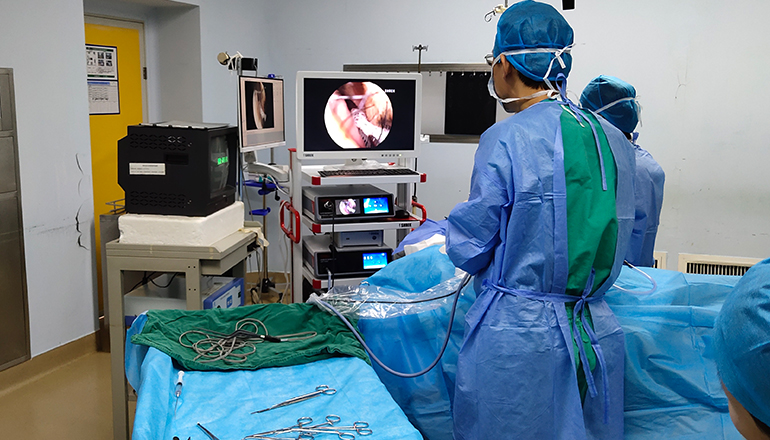- Shanghai, China
- [email protected]
- +86-21-58189111
ENT endoscope surgery is a minimally invasive surgical procedure that involves using an endoscope to visualize and operate on the ear, nose, and throat. While it is a relatively safe procedure, there are still some precautions that need to be taken to ensure the best possible outcome for the patient. In this article, we will discuss some of the precautions that need to be taken during ENT endoscope surgery.
Preoperative preparation
Before the surgery, the patient should be thoroughly evaluated to ensure that they are suitable for the procedure. This includes a thorough physical examination and a review of their medical history. Any underlying medical conditions or allergies should be identified and managed accordingly. The surgical team should also ensure that all equipment is sterilized and in good working condition.
Patient positioning
Proper patient positioning is crucial for successful ENT endoscope surgery. The patient should be positioned in such a way that the surgeon has clear access to the area being operated on. The patient should also be comfortable and their airway should be maintained throughout the procedure.
Anesthesia
Most ENT endoscope surgeries are performed under local anesthesia with sedation. However, in some cases, general anesthesia may be required. In either case, the patient’s vital signs should be continuously monitored to ensure that they are stable throughout the procedure.
Surgical technique
The surgical team should have a clear understanding of the anatomy and the surgical technique being used. The endoscope should be inserted carefully, and the surgeon should use gentle, precise movements to avoid damaging any surrounding structures.

Hemostasis
Bleeding is a potential complication of any surgical procedure. The surgical team should have the necessary equipment and skills to manage any bleeding that occurs during the procedure. Hemostasis should be achieved before the endoscope is removed to avoid bleeding after the procedure.
Postoperative care
After the procedure, the patient should be monitored closely to ensure that they are stable. Pain management and postoperative care should be provided as needed. The patient should be given clear instructions on how to care for the surgical site and when to follow up with their surgeon.
In conclusion, ENT endoscope surgery is a safe and effective procedure when performed by a skilled surgical team. By following the above precautions, the surgical team can minimize the risk of complications and ensure the best possible outcome for the patient.
Complications
Although rare, complications can occur during or after ENT endoscope surgery. The surgical team should be prepared to manage any potential complications that may arise. Complications may include bleeding, infection, damage to surrounding structures, and adverse reactions to anesthesia.
Communication with the patient
Effective communication with the patient is crucial for a successful ENT endoscope surgery. The surgical team should explain the procedure to the patient in a clear and concise manner, address any concerns or questions that the patient may have, and ensure that the patient fully understands the risks and benefits of the procedure.
Experience and training of the surgical team
The surgical team should have the necessary experience and training to perform ENT endoscope surgery. This includes a thorough understanding of the anatomy and surgical technique, as well as experience in managing potential complications that may arise during or after the procedure.
In summary, ENT endoscope surgery is a safe and effective procedure when performed by a skilled surgical team. Preoperative evaluation and preparation, proper patient positioning, appropriate anesthesia, meticulous surgical technique, hemostasis, postoperative care, effective communication with the patient, and the experience and training of the surgical team are all important factors to consider when performing ENT endoscope surgery. By following these precautions, the surgical team can minimize the risk of complications and ensure the best possible outcome for the patient.
Leave a Comments